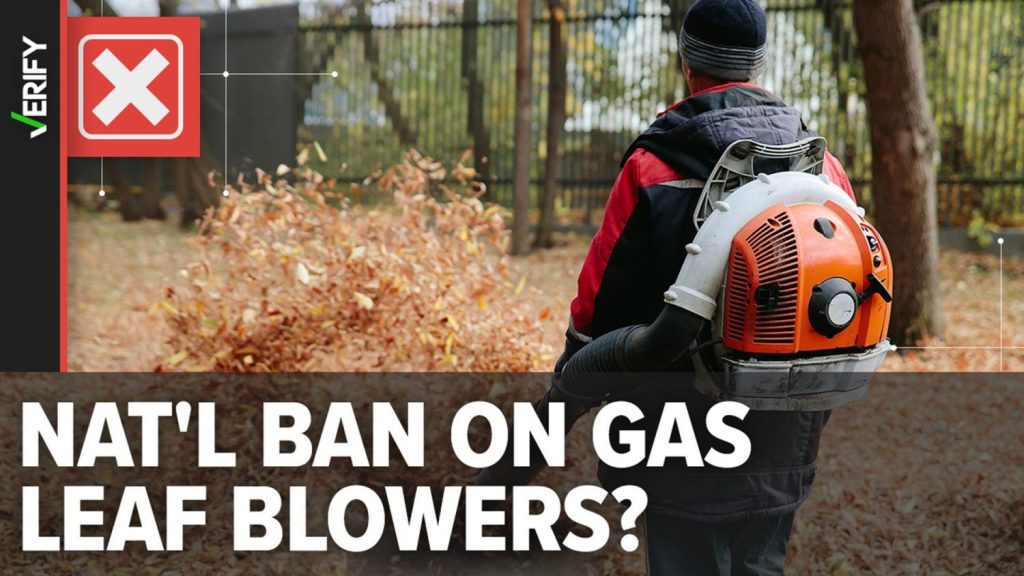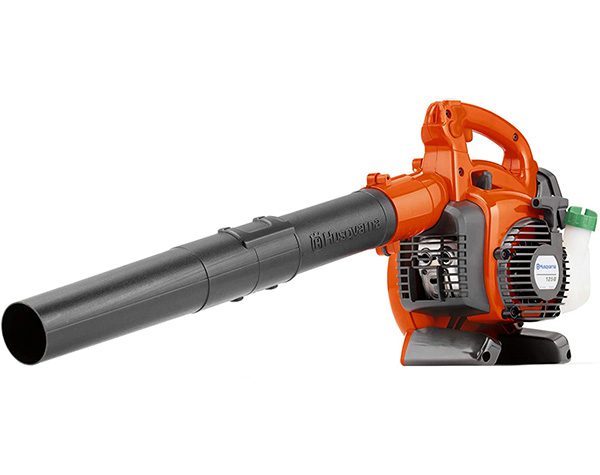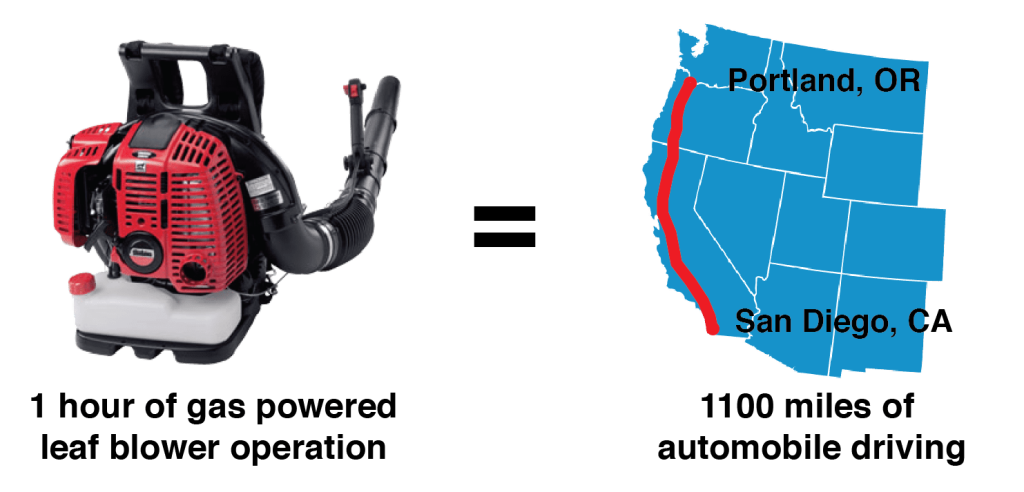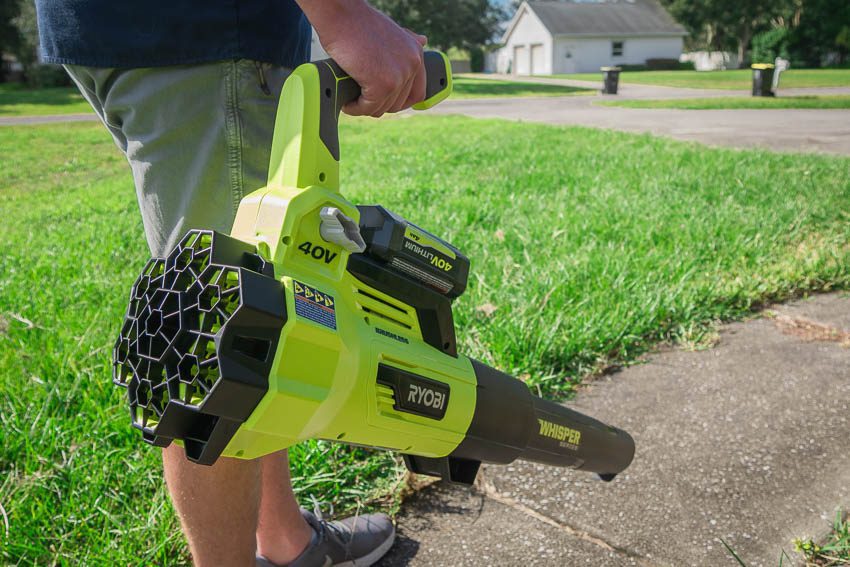Gas leaf blowers have become popular tools for homeowners and professionals alike to keep outdoor spaces clean and tidy. However, there is growing concern about the environmental impact of these machines. In this article, we explore the question, “Are there any emission regulations for gas leaf blowers?” and delve into the existing regulations, if any, that aim to control the emissions produced by these powerful tools. Join us as we uncover the facts to help you make informed decisions about the impact of gas leaf blowers on our environment.
This image is property of www.southpasadenaca.gov.
Overview of gas leaf blowers
Gas leaf blowers are popular tools used for clearing leaves and debris from lawns, yards, and outdoor spaces. They are powered by gasoline engines and provide a high level of blowing force, making them effective for large-scale leaf removal tasks. Gas leaf blowers come in various sizes and designs, offering different levels of power and functionality to cater to different needs.
Types of gas leaf blowers
There are two main types of gas leaf blowers: handheld blowers and backpack blowers. Handheld blowers are the most common and are held with one hand, making them convenient for small to medium-sized tasks. Backpack blowers, on the other hand, are worn on the back like a backpack and are suitable for more extensive and demanding jobs. Both types have their advantages and are chosen based on factors such as the size of the area to be cleared and the user’s comfort.
Advantages of gas leaf blowers
Gas leaf blowers have several advantages that make them a popular choice among homeowners and professionals. Firstly, they provide more power than electric leaf blowers, allowing for efficient and quick leaf removal. Secondly, they do not require a power source or extension cord, making them more versatile and suitable for use in remote areas. Finally, gas blowers offer greater mobility and flexibility, enabling users to navigate through various terrains and hard-to-reach corners.
Drawbacks of gas leaf blowers
While gas leaf blowers offer many benefits, they also have a few drawbacks to consider. One of the primary concerns is the noise level produced by the gasoline engines, which can be disruptive and bothersome, particularly in residential areas. Additionally, gas blowers emit exhaust fumes and contribute to air pollution, which can have detrimental effects on the environment and human health. These concerns have led to the implementation of emission regulations for gas leaf blowers.
Concerns regarding emissions
Environmental impact of gas leaf blowers
Gas leaf blowers emit pollutants such as carbon monoxide, nitrogen oxides, and volatile organic compounds (VOCs). These emissions can contribute to air pollution and have a detrimental impact on the environment. Carbon monoxide, for example, is a greenhouse gas that contributes to climate change, while nitrogen oxides and VOCs can react in the atmosphere and form harmful secondary pollutants, including ground-level ozone and particulate matter.
Air pollution caused by gas leaf blowers
Gas leaf blowers can significantly contribute to air pollution, particularly in densely populated areas. The exhaust emissions from these blowers contain pollutants that can exacerbate respiratory issues and contribute to the development of cardiovascular diseases. The noise pollution caused by gas blowers is also a concern as it can affect overall air quality by disturbing the peace and tranquility of residential neighborhoods and public spaces.
Existing emission regulations
Federal regulations
The United States has implemented federal regulations to address the environmental impact and emissions of various devices and equipment, including gas leaf blowers. The Environmental Protection Agency (EPA) is responsible for setting emission standards and regulations for these equipment to ensure they meet specific criteria and minimize their impact on air quality and public health.
State regulations
In addition to federal regulations, many states have implemented their own emission regulations for gas leaf blowers. These regulations aim to further restrict emissions and noise levels, taking into account local environmental concerns and public health considerations. California, in particular, has been at the forefront of implementing stricter emission regulations, leading the way in promoting cleaner and more environmentally friendly alternatives.
Federal emission regulations
Environmental Protection Agency (EPA) standards
The EPA has established emission standards for various types of small engines, including those used in gas leaf blowers. These standards set limits on the amount of pollutants that can be emitted from these engines, with the goal of reducing their impact on air quality and public health. The EPA standards take into account factors such as engine size, power output, and emission control technologies to determine the acceptable emission levels for gas leaf blowers.
This image is property of media.tegna-media.com.
State emission regulations
California regulations
California has enacted its own emission regulations for gas leaf blowers, known as the California Air Resources Board (CARB) regulations. These regulations are more stringent than the federal standards and have been implemented to address the state’s unique air quality challenges. CARB regulations require gas leaf blowers to meet stricter emission limits and also establish noise limits to mitigate the impact on local communities.
Other states with emission regulations
While California leads in terms of emission regulations for gas leaf blowers, other states have also implemented their own regulations to reduce emissions and minimize the environmental impact. States such as New York, Illinois, and Colorado have introduced stricter guidelines on emission levels and noise limitations. These regulations vary from state to state, taking into account local environmental conditions and public health concerns.
Impact of emission regulations
Reduction in emissions
The implementation of emission regulations has led to a significant reduction in the emissions produced by gas leaf blowers. The EPA standards, coupled with stricter state regulations, have pushed manufacturers to develop cleaner-burning engines and incorporate advanced emission control technologies. As a result, newer models of gas blowers emit substantially fewer pollutants compared to older models, contributing to cleaner air and a healthier environment.
Benefits for public health and environment
The reduction in emissions from gas leaf blowers has tangible benefits for public health and the environment. By minimizing the release of pollutants such as carbon monoxide and nitrogen oxides, emission regulations help improve air quality, particularly in urban areas where the concentration of pollutants is often high. This, in turn, reduces the risk of respiratory and cardiovascular diseases, ultimately improving the overall well-being of communities and protecting the natural environment.
This image is property of www.southpasadenaca.gov.
Challenges in implementing regulations
Enforcement issues
One of the challenges faced in implementing emission regulations for gas leaf blowers is ensuring effective enforcement. With numerous brands and models available on the market, it can be challenging to monitor and enforce compliance with the established emission standards. Adequate resources and strict enforcement measures are required to ensure manufacturers and users adhere to the regulations, and that non-compliant products are identified and removed from the market.
Resistance from manufacturers and users
Another challenge is the resistance faced from some manufacturers and users who may be hesitant to embrace the stricter emission regulations. Manufacturers may be reluctant to invest in research and development for cleaner technologies, as they may perceive it as costly and time-consuming. Similarly, some users may be resistant to switching to cleaner alternatives due to concerns over potential limitations in power, performance, and convenience. Overcoming this resistance and promoting wider adoption of cleaner gas blowers or alternative options is crucial for successful emission reduction.
Alternatives to gas leaf blowers
Electric leaf blowers
One alternative to gas leaf blowers is electric leaf blowers. Electric blowers are powered by electricity and do not emit any direct exhaust emissions. They are generally quieter than gas blowers and require less maintenance. Electric blowers are best suited for smaller tasks and are often favored by homeowners with smaller yards or in areas where noise restrictions are in place. However, their range is limited by the availability of a power source and the need for an extension cord.
Battery-powered leaf blowers
Battery-powered leaf blowers are another alternative to gas blowers. These blowers are cordless and operate on rechargeable batteries, providing mobility and convenience similar to gas blowers. Battery-powered blowers are typically quieter than gas blowers and produce zero emissions during use. However, their power and runtime may be limited compared to gas blowers, so they are more suitable for smaller jobs and may require additional batteries for extended use.
This image is property of i0.wp.com.
Future developments
Advancements in technology
As awareness of environmental concerns grows, there is a greater focus on developing cleaner and more efficient technologies for leaf blowers and other outdoor power equipment. Manufacturers are investing in research and development to improve engine design, optimize fuel combustion, and enhance emission control systems. Advancements in battery technology are also underway, with the goal of extending the runtime and power of battery-powered blowers. These developments will help address the emissions and performance limitations currently associated with gas blowers and alternative options.
Possible tighter regulations
Considering the growing environmental concerns and the need to further reduce emissions, future regulations for gas leaf blowers are likely to become even more stringent. As technologies continue to advance and cleaner alternatives become more widely available, regulators may impose tighter emission limits, further drive the adoption of cleaner technologies, and promote the use of alternative options. These regulations will play an essential role in reducing the environmental impact of leaf blowers and improving air quality for the benefit of both humans and the natural environment.
Conclusion
Gas leaf blowers are widely used for leaf removal, but their emissions have raised concerns regarding air pollution and public health. Emission regulations implemented at both the federal and state levels have helped reduce the environmental impact of gas blowers and promote cleaner technologies. Stricter regulations, along with advancements in technology and the availability of cleaner alternatives, will continue to drive the shift towards more sustainable and environmentally friendly leaf clearing practices. By embracing these changes, we can create a healthier, cleaner, and more sustainable future for our communities and the planet.
This image is property of www.quietcleanpdx.org.






































